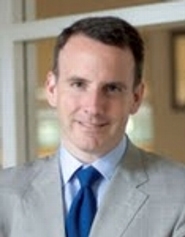
“Today, more than 50 percent of humanity lives in cities,” said Edward Glaeser, professor of economics in the Faculty of Arts and Sciences at Harvard University. And while Mohandas Gandhi once intimated that the strength of a country “lives in its villages,” Glaeser explained that he respectfully disagreed, and that “there is no future in rural poverty.” Rather, it is the city, an urban development defined largely by “high proximity, closeness and density of people,” which enables the “creation of the chains of collaborative brilliance that drive success.”
Glaeser, director of the Taubman Center for State and Local Government and director of the Rappaport Institute of Greater Boston was a speaker in the Levitt Center’s Sustainability series on April 11.
Glaeser explained that, in the late nineteenth century, America saw rapid growth in the development of its infrastructure -- primarily, in its expanding network of canals and railroads. Better modes of transportation enabled many Americans, who, desiring to move further west (and suddenly having the means to do so), ultimately chose to leave the once-crucial port cities, their “coastal enclaves.” But now, in the 21st century, the opposite is happening: people are cramming back into many of the port cities that their forebears once chose to move away from.
“This leads to a central paradox,” said Glaeser. “Why is it that in an era in which transportation and communication costs have virtually vanished, cities have become more important than ever?” He continued: “urban resurgence is often visible in high income levels, robust housing prices, and a concentration of innovation in urban areas. . . . Even life satisfaction improves by higher percent urbanization.”
Citing as an example of the importance of proximity and population density on human work potential, Glaeser mentioned the recent overhaul of New York’s city hall. “From his experience on Wall Street, Mayor Michael Bloomberg learned the value of face-to-face connection, and he turned city hall into a wall-less bullpen that enables the speedy flow of information,” said Glaeser. Ultimately, this emphasizes Glaeser’s significant observation that “knowledge is more important than space. That’s why cities themselves have come back. We have increased the returns of being smart, of our innovation. Cities are succeeding because we are an urban species; our greatest strength lies in our ability is to learn from one another.”
Glaeser ended his lecture on a positive note: “Over the past 3,000 years, we as a species have made outstanding achievements,” he said. “We can borrow from one another, learn from one another. And we will be able to continue to make miracles, as long as we maintain the chains of innovation that keep moving us forward.”
Posted April 12, 2012
